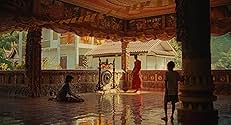Satu - Year of the Rabbit
- 2024
- 1h 33m
When a bomb endangers the Pha Tang temple, 'Satu' an orphan child laborer decides to head north through the rich and feral landscape of Laos in search of his long lost mother with his new ph... Read allWhen a bomb endangers the Pha Tang temple, 'Satu' an orphan child laborer decides to head north through the rich and feral landscape of Laos in search of his long lost mother with his new photojournalist friend 'Bo'.When a bomb endangers the Pha Tang temple, 'Satu' an orphan child laborer decides to head north through the rich and feral landscape of Laos in search of his long lost mother with his new photojournalist friend 'Bo'.


















